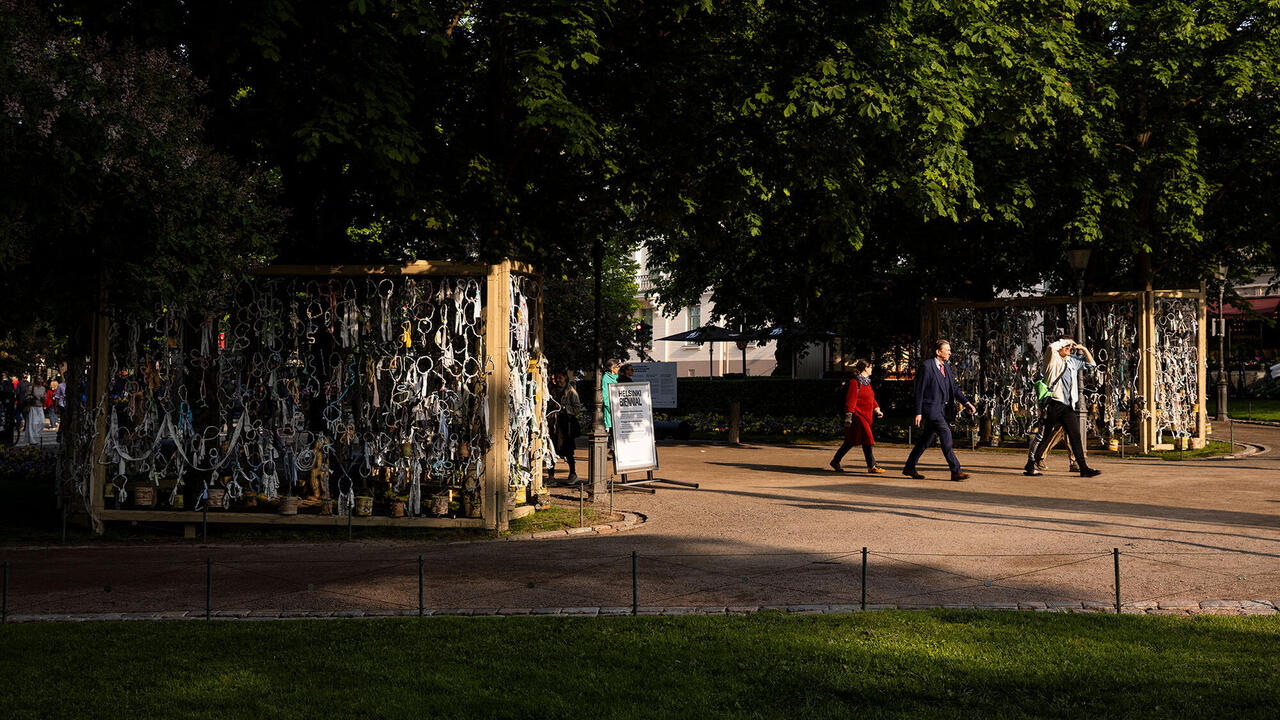Club Transmediale 2009
Two days at Berlin’s tenth annual music and visual arts festival
Two days at Berlin’s tenth annual music and visual arts festival

In one of the many rooms of the Kunstraum Kreuzberg/Bethanien, a former hospital building turned art space, a wall of brightly coloured Post-it notes bears requests for and offers of local skill-sharing, while an informal tutorial on an audio application takes place in another corner. Mysterious ambient sounds beckon towards a monitor displaying soundmuseum.fm, an online ‘museum’ for contemporary sonic art. I have wandered into this workshop-cum-laboratory from sociologist Volker Grassmuck’s lecture on the cultural flatrate model, a proposed system of taxation on the media services used for downloading in an attempt to remunerate artists whose work is increasingly accessed unofficially. After a weighty discussion of policy and communications theory, here is a welcome reminder that human connections, on whatever scale, are still at the heart of any creative enterprise.
Now in its tenth year, the ten-day Club Transmediale festival of ‘adventurous music and related visual arts’ combines serious examinations of new music and sonic art with a series of night events in which refined minimal techno sits alongside avant-metal riffs, and a range of electronic music, from Raster-Noton’s future-glitch and techno legend Wolfgang Voigt to euphoric British noise duo Fuck Buttons and the latest names in dubstep, is celebrated. Each year’s festival takes a necessarily ambiguous theme as its starting point: 2009’s is ‘Structure’, a word open to numerous interpretations. From the snapshot I gain from a two-day visit, the daytime programme of events seem to take this as a starting point to refer to the infrastructures of cultural production, distribution and consumption, which have this century been evolving and mutating with ever-increasing speed, in response to new technologies.
The decline of the physical music industry as we know it is has been almost accepted as fact by those working within it, a prediction exacerbated by current economic realities. Discussions in UK media tend toward the nostalgic, almost kitsch, on the one hand – as commentators bemoan the loss of record shops and fetishizing the ‘tactility’ of analogue music products – and a kind of anarchic, year-zero, free-for-all optimism on the other. Neither of these positions represents a way forward, for one looks to the past, and the other fails to address that with speed and volume of access to music comes very real costs for artists and label-owners, distributors and manufacturers.
With guests such as KLF’s Bill Drummond (presenting the provocative case that ‘recorded music has run its course’) and MC5 associate John Sinclair, as well as a day devoted to discussion of ‘Unofficial Channels’, it’s clear that Transmediale’s organizers are tuned to the exhilarating possibilities of people-led musical and media structures, while remaining mindful of their costs. Danish-made film Good Copy Bad Copy (2007) is an energetic, optimistic introduction to copyright law and the history of sampling, and suggests a future where the real unofficial channels – the booming, copyright-free Nigerian film industry; the Brazilian Tecno Brega craze – are perhaps those to which we should look for ideas.
As we arrive on the Tuesday, Imaginary Futures (2007) author Richard Barbrook is conducting a lively talk on the role of DIY, amateurs and hobbyists in shaping culture. A more sober panel follows, however, as Thaddeus Hermann, editor of De:Bug magazine, examines the positive and negative realities of releasing electronic music online, with Stewart Walker and Jan Gleichmar talking about their net labels, Persona and Jahtari. Gleichmar in particular claims that vinyl is still highly relevant in dance circles, but another participant remarks that the lathe-cutting skills required to actually make a record are on an irrevocable decline. Hermann asks the panel to reflect more generally upon the political and economic shifts that new technologies will force in the near future, in areas such as royalties and copyright. If anything is agreed, it is perhaps that digital models that simulate analogue ones (such as the record label) perhaps feel like uneasy alliances.
This relationship is explored in Tuesday evening’s musical programme, put together by Montreal collective Friction. As turntable artist Martin Tétreault’s brutalist record decks – using discs made of wood, metal and what looks like wicker – are processed and filmed in quadruplicate by Julien Roy, we hear and see a conversation about machine music that refers to both its earliest, industrial/concrète manifestations and the latest in audio software. Visually arresting, the flow of the piece is less so, with methodology winning out over sonic engagement. Tétreault fares better with a collaborative performance with drum ensemble Berlin 100% Batterie. Each drummer performs a series of composed, tense patterns in various groupings, culminating with Tétreault accompanying them in a slowly building wall of drum loops and treated vinyl.
Tétreault’s work throughout the evening is structurally and conceptually fascinating, but it is those performing with more conventional musicality that leave the strongest impression. Austrian artist and soundtrack composer Stefan Németh, tonight performing with drummer Stephen Hess, recreates elements of his last Thrill Jockey-released album, Film (2008), using a modular synthesizer as his main tool. Its warm, exploratory tones create a dialogue with Hess’ jazz-influenced drumming that never feels forced; and while the performance takes place with no visual accompaniment, this is not missed.
Headliner Mika Vainio, meanwhile, offers the most satisfying set of the evening with a set of the distinctive noise-techno with which he and his duo Pan Sonic have perfected since their inception in the mid-‘90s. Vainio’s skill lies in manipulating simple, often home-made equipment in real-time, coaxing infectious rhythmic interplay from the barest of musical palettes. While ‘minimal’ can be shorthand for overly tasteful and forgettable dance music, in Vainio’s hands its pauses and pulses, accompanied by simple, Rorschach-like visuals, take on a sinister, compelling aspect, and method and content are united in an irresistible whole: a reminder that electronic music’s transformative potential is not as dependent upon technological neophilia as it is often perceived to be.















